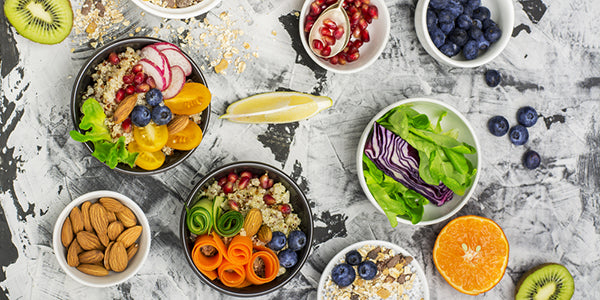
Down Syndrome and Nutrition
A common symptom of Down Syndrome is low muscle tone, causing a greater amount of fat mass and less muscle in the body. Reduced muscle and the high incidence of hypothyroidism heightens the risk of weight gain, only increasing the importance of good nutrition. Below describes basic guidelines to not only manage weight, but potentially cope other health conditions that may arise:
Go Lean
Rather than consuming highly processed, high-fat meats, opt for leaner varieties. Not only can protein facilitate muscle growth, but prompt satiety or feelings of fullness to lessen the risk of overeating. Valuable lean and plant-based protein sources include chicken, turkey, sirloin, fish, beans, and quinoa.
Color the Plate
Coloring the plate with veggies and fruits offers bulk while naturally keeping calories in check. Asparagus, broccoli, carrots, cauliflower, celery, peppers, and salad greens are valuable non-starchy veggies, while starchier vegetables include sweet potatoes, russet potatoes, corn, peas, squash, and pumpkin.
Fiber Up
In people with Down Syndrome, they experience an increased risk of constipation related to lower muscle tone and reduced motor activity. Choosing whole grains and wheat products over refined products supplies wholesome vitamins, minerals, and fiber that white and processed foods generally lack. Fresh fruits and veggies also contribute to daily fiber needs, or specifically 38 grams for males per day and 25 grams for females.
Hydrate the Right Way
Hydration is imperative to health in a number of ways. Not only is it vital to sustain life, but can promote bowel regularity and weight management. Aim to achieve at least 64 ounces of water each day.
Watch Portion and Serving Sizes
Aside from the quality of foods themselves, it is also important to watch the quantity consumed at snacks and meals. Comprising at least half the plate with non-starchy veggies, pairing with a protein source, and adding a whole grain or complex can naturally produce a well-proportioned meal plate. Most nutrition experts suggest consuming three meals per day, along with one to two portioned snacks to keep hunger at bay and blood sugars regulated.
Limit Sugar Intake
Limiting sugar intake mostly rids of unnecessary and empty calories, which can maintain weight or lower the risk of gaining it. If desiring something sweet, select a piece of fruit or consume a small, portioned piece of a candy bar, brownie, ice cream, etc. Limiting sugary products and consuming a balanced diet can assist in diabetes management, along with reducing the risk of its development or any future complications.
Be Weary of Spicy Foods
People living with Down Syndrome have an increased risk of gastroesophageal reflux disease, also known as GERD. Spicy foods can be an irritant and exacerbate symptoms, including heartburn and indigestion. Aside from limiting spicy foods, reducing fat and caffeine intake, eating small and more frequent meals, waiting at least one to two hours before lying down following meals can lower the risk of GERD symptoms.
Balance with Physical Activity
The following tips can increase not only add active minutes throughout the week, but build and strengthen self-confidence and social connections.
• Join a family or recreational center
• Sign-up for any local sport leagues, including volleyball and kickball
• Use seasonal chores to your advantage, including raking leaves in the fall and shoveling snow in the winter
• Park further away from entry doors, along with taking the steps over elevators
• Find a trail in your area and hike or bike with a friend, further packing a nutritious picnic
• Get active even when watching television, including with these seven simple commercial break workouts
• Volunteer to walk dogs at a humane society or package meals at a food drive
Ultimately, there really is no wrong way to get active, just that you are!







